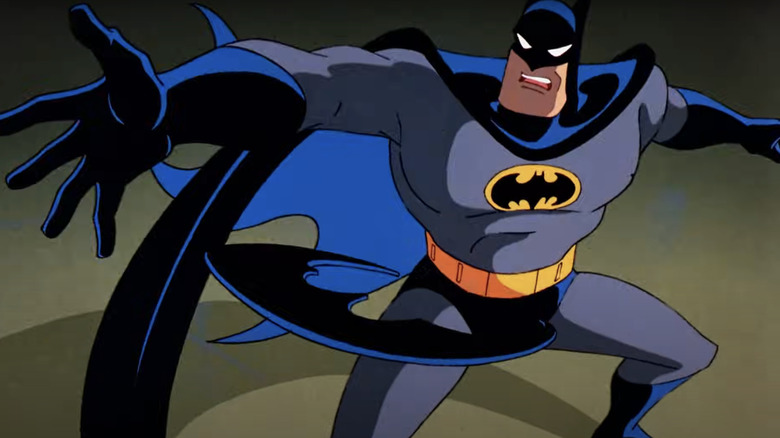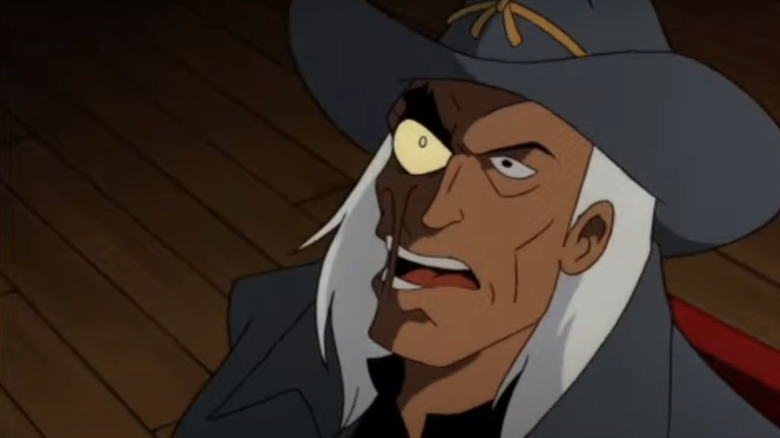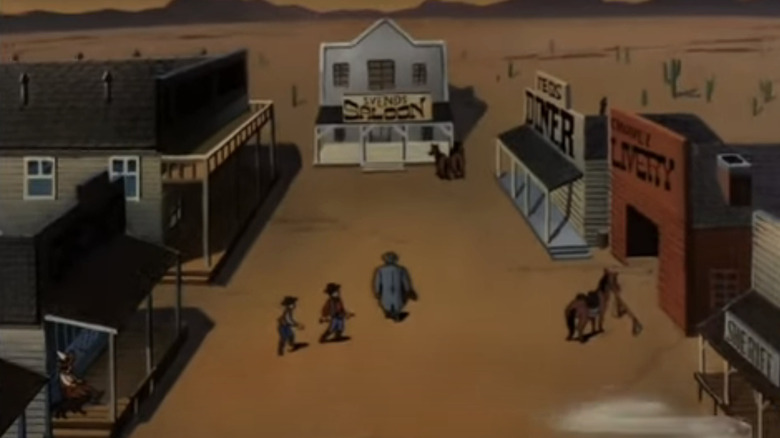The Batman: The Animated Series Episode That Transformed The Show Into A Western
/Film readers likely know that the aesthetic of "Batman: The Animated Series" is part of what made the show such a success. The "Dark Deco" look, as it was known, was an extension of the show's willingness to tell much more mature storylines and treat kids as if they were smart enough to understand them. The black card backgrounds and film noir-inspired designs spoke to this desire to tell more adult stories, with "BTAS" crafting an immersive and oppressive Gotham City that felt truly unique amid the comparatively wacky designs of fellow Fox Kids series like "Taz-Mania" and "Eek! The Cat."
With other visual influences ranging from Alfred Hitchcock movies to Tim Burton's Batman films, you might not have expected "BTAS" to go full western during its 1992-95 run. But that's exactly what it did in a season 2 episode that, while it might not be remembered as one of the best "Batman: The Animated Series" episodes, remains a memorable entry in the series if only for how unique it was amid the other installments — visually and otherwise.
Not that "BTAS" didn't take risks. The show proved its willingness to expand on Batman lore, introducing a full backstory for Mr. Freeze and inventing the now hugely-popular character of Harley Quinn, who wasn't the only Batman villain created by the series. But the show wasn't necessarily known for switching up its all-important tone, which is what makes "Showdown," with its Old West setting, so interesting.
Showdown introduced a DC anti-hero to Batman: The Animated Series
Airing as the eighty-second episode of "Batman: The Animated Series," "Showdown" debuted after the show had entered its "The Adventures of Batman & Robin" era. For its second season, Fox mandated that Robin appear in every episode, leading to one episode being rejected that would have featured a beloved DC hero. This studio demand was marked by the show's title change which accompanied the debut of the second season in 1994. By September 12, 1995, when "Showdown" aired, kids were very much used to Batman venturing out alongside his younger sidekick — which is exactly how "Showdown" begins, as the dynamic duo descend upon a retirement home where Ra's al Ghul and his thugs have broken in for unknown reasons. Things quickly take an abrupt turn, however, after the pair discover a tape left by the villain and listen to it in the Batmobile. The majority of the rest of the episode mostly plays out in flashback, during which we're treated to a full Western.
"Showdown" was written by Texan author Joe R. Lansdale, who, aside from being a contributing writer on "BTAS," has written novels and several critically acclaimed comic books featuring DC's bounty hunter character Jonah Hex. It was this anti-hero, who first appeared in "All-Star Western" #10 in 1972, that Lansdale brought to "BTAS" in "Showdown." The episode's flashback to 1883 features Hex, voiced by Bill McKinney, visiting the town of Devil's Hole to track down an outlaw named Arkady Duvall. His search leads him to a nearby mountain where Ra's al Ghul is building a giant airship designed to stop the construction of a railroad nearby and to ultimately help Ra's take control of the U.S. government. Duvall is part of the crew helping to oversee the construction. Hex is discovered spying on the operation and is captured by Ra's and his gang, but he eventually escapes, thwarting the villain's attempt to seize control of the U.S.
The episode ends in the present day, with Batman and Robin learning that Duvall was actually Ra's' son who ultimately ended up in the care home from the beginning of the episode. It seem's Ra's Jr. was given a longer life after exposure to the same Lazarus pit from which Ra's gained his extended lifespan. As such, the Batman rogue was at the care home to retrieve his son, which it seems is enough for the Dark Knight to let his old adversary go.
Multiple influences made Showdown a memorable Batman episode
Joe Lansdale spoke about how he wanted to portray Jonah Hex in an episode of "Batman: The Animated Podcast," explaining how he envisioned an East-Texan version of the anti-hero who was a Confederate and somewhat "caught as a man of his time, and yet a man evolving out of that time." The writer continued:
"I wanted to bring in the supernatural element, and I wanted him to be not some guy that came from a family where the people had money. I wanted him to be the kind of dirt-poor people I knew as I grew up, and I felt I could give that a more realistic view. And I also wanted to show that his evolving views on things were changing, that had turned into a form of cynicism in some cases, satire in others, and just a raw dark sense of humor."
Lansdale and his sensibilities are a big part of why "BTAS" made such a big shift with "Showdown," but there were other influences at play, too. The story itself came from "BTAS" director Kevin Altieri, co-creator Bruce Timm, and writer Paul Dini, and the whole episode was influenced by George MacDonald Fraser's novels and short stories "The Flashman Papers," with the creators taking some major cues from protagonist Harry Flashman for the Arkady Duvall character. Even more interesting is the fact that Duvall was voiced by "A Clockwork Orange" star Malcolm McDowell, who later voiced villain Metallo in "Superman: The Animated Series." Jonah Hex would also make his second DC Animated Universe appearance in a 2005 episode of "Justice League Unlimited."
"Showdown" remains one of the most unique episodes of "BTAS," and while it isn't responsible for any major additions to Batman lore, it is noteworthy for proving that the writers and artists could craft a compelling story that retained the show's tone while completely scrapping the gloomy, Art Deco environs that were so vital to the series' appeal.


